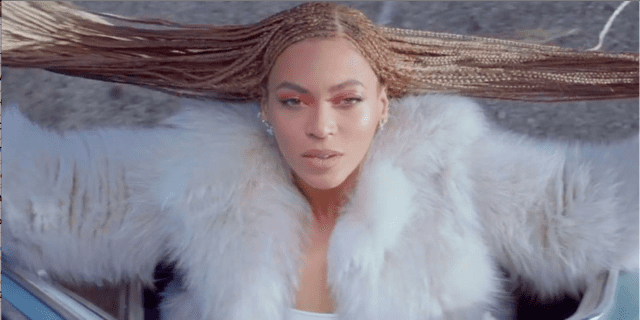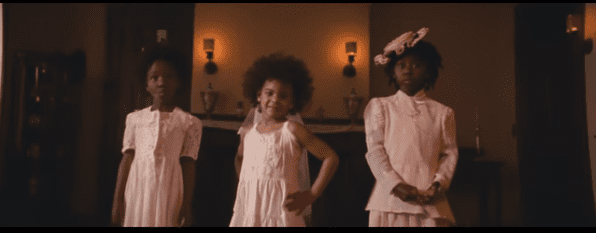Beyonce’s recently released video “Formation” debuted to virtual standing ovation for some pretty obvious reasons. Not only did she manage to make a visual that is both stunning and captivating, the four minute clip was loaded with political messages about feminism, police brutality and even a statement on the flooding of Hurricane Katrina. To a large extent, this video is a movement; a call to action for black women and black people.
A moment of congratulation is in order for the artist. This video marks a new step in both her political and musical career that very few artists would even have the gall to make. I’m certain we can all agree on the impressiveness of Queen Bey. Slay, Bey. Slay.
However, given the current conversations surrounding race and social inequality, I think there must also be space to critique this video — and also Beyoncé’s Super Bowl performance of the song. We do not need to just accept ‘Yoncé’s political message as fully-dimensional or all-encompassing. While the video does much to spark conversations about race and shine a spotlight on racial injustice, it also manages to reinforce colorism in ways both clandestine and outright. Tackling injustice and inequality requires rooting it out even within the black community. It means promoting unity and equality across varying shades of blackness. In some ways, Beyonce’s recent performance and new video failed to do that and instead reinforced a color and hair texture hierarchy that breeds inequality.
In “Formation” Beyonce sings, “I see it I want it/ I stunt yellow-bone it.” The term “yellow-bone” is a reference to her honey-colored complexion, which has been the subject of much debate. L’Oreal was hit with a major backlash, after it featured the singing diva in an ad with skin far lighter than her fans were accustomed to. This led to resurfaced rumors that the singer was bleaching her skin. These rumors cropped up when an unsubstantiated claim that Beyonce’s manager and father, Matthew Knowles, persuaded her to use skin lightening products to stand out from other members of the Destiny’s Child group she was then a part of. Then there was the the image used promote her fourth album that showed Beyonce sporting blonde hair, red lipstick and far whiter skin than normal, prompting swift accusations of skin lightening.
However, she looks even lighter in “Formation.” In one scene, she’s seen hanging out of the window of a car, adorned in a white fur, as her long braids toss about carelessly in the wind. Her skin is so light that it seems almost intentional. But what, precisely, would be the purpose of this artistic choice in a video meant to celebrate blackness? In truth, the singer is celebrating her own blackness– yellow- boned, blonde weave and all, which would be fine if that celebration didn’t have major history.

When we consider some many of the scenes in the video have a colonial/slavery era motif — the lace, plantation-style home, vintage era rugs and furniture — the implications of this “yellow bone” celebration is quite problematic. Colorism is real and has been a significant problem for black people; used to divide, elevate and oppress members of the same group based on their lightness. That caste system, though still extremely relevant today, had major implications for black people of the past. Access was allowed or disallowed based on skin color– if an individual had skin lighter than a brown paper bag, they got a pass, others weren’t so lucky.
For this reason, it pains me to say, but the shots with her daughter and two other black girls– who are both of a darker complexion– really struck me as odd. In the first shot that features the trio, the little girls are seen running around a room. But by the third and fourth time they appear, Blue Ivy seems to be the only carefree black girl, positioned in the middle and slightly in front of the two other girls as she grins but they remain stoic. It is awkward to say the least.

For other examples of lighter phenotypes being placed front and center, one need not look further than Bey’s Super Bowl halftime performance. Accompanied by her female dancing soldiers, she took to the field to pay homage to the history of the Black Panthers. All of the ladies were wearing matching black outfits and Afros. Beyonce, playing the part of the general, was sporting long blonde tresses, making her noticeably different from her black female counterparts. On the surface level, this may appear to be insignificant. After all, it is only hair. But hair politics have been used to divide and oppress black women for generations. Less kinky and lighter hair has been historically preferred for its proximity to whiteness. These hair politics are evident in everything from workplace discrimination when black women try to wear their natural hair to even the absence of natural hair in current media. To position a black woman who has lighter and/or straighter hair in front of other black women who have kinky dark Afros is reinforcing this very social hierarchy.
This has been done far too frequently by Beyonce’s camp who has put her front and center– while her darker-skinned band members with darker hair are sidelined– since the inception of her career as a singer in Destiny’s Child. Yes, perhaps Beyonce could have always had the most musical prowess and performing ability, it is impossible to argue this positioning does not have huge significance, even in the white world where blonde is considered better.
This is not meant to insinuate that wearing her hair natural or darker is “more black” than wearing straight weaves or lighter colored hair– both of these styles are black as black can get. However, the constant presence of this blondeness in a space meant to celebrate blackness is unsettling at best and extremely problematic at worst, when we consider the reality that the vast majority of African-American people do not have blonde hair.
While it is true that black can come in all shades and every shade should be equally celebrated, the history of lighter-skinned black people being given more access to success and also being used to represent the black population as a whole means the celebration of lighter skin is just redundant. From the fact that the best paid female Hollywood actresses are lighter skinned or even bi-racial, to the reality that lighter-skinned black people tend to receive less harsh sentences for the same crimes compared to their darker counterparts, there are enough ways that society rewards lightness. So a video that is meant to celebrate blackness should take this factor into account.
Some of these observations may seem “too sensitive”, but sadly an artist like Beyonce, making huge political statements in America must be willing to appease that sensitivity, because it is highly warranted. Racism is real. Just as real as colorism. And both are issues that merit discussion, action and also sensitivity.
However, one should not expect a single artist to adequately represent and speak for an entire population. If there were far more artists with huge public platforms that could be used to spread political messages, certainly there would be better representation for all women, girls and people of color– of all shades. We cannot blame Beyonce for that shortcoming of society, because she is merely one woman and her only responsibility is to make art that represents her and her position. The problems raised with this video merely highlight and underscore that need for better overall representation. We need Beyonces. We also need Jennifer Hudsons, Whitney Houstons. And Toni Braxtons. Right now, the industry is struggling to provide this necessary multi-dimensionality.
While Beyonce’s messages in “Formation” are extremely powerful to black people and black women, the subtle reinforcement of colorism adds a social layer that we are all obligated to acknowledge. Not because she is not a powerful artist, with an important message that has struck us at our core; she is those things and has done just that. But because she is a single black woman who cannot represent the full complexity of the black experience. Nor should she be expected to.
While we celebrate the fierceness that is Beyonce, we must also fight to make room for other artists as well. Our black is not a monolith.
Original by Tiffanie Drayton
